Brocock’s new flagship takes the brand to a new level, as the editor finds out
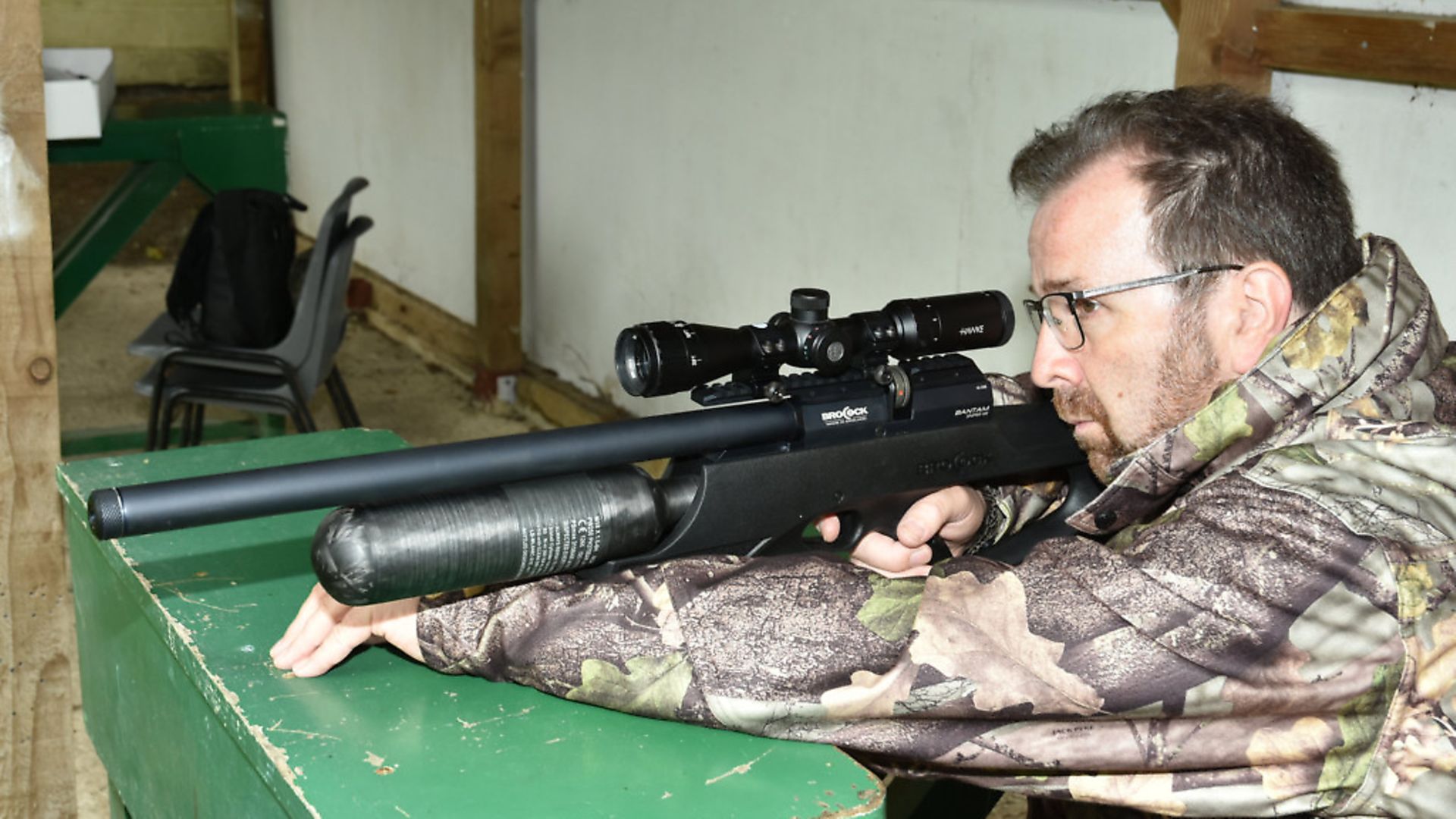 credit: Archant
credit: Archant
It doesn’t seem all that long ago that the old Brocock company fell on hard times. Like many others, I worried that they’d be lost, but when they were bought by the same holding company that owns Daystate, I felt it was very good news. An injection of capital and a rethink about how they did things and they were soon back on their feet. Since then, we’ve seen a steady stream of innovative new models released, all engineered to a much higher standard than the old guns, and their performance has taken a huge leap forward, too.
I particularly liked the Compatto. It’s a rifle that I’d be happy to hunt with because it works for me in the real world, not just in the designer’s mind, or in the artificial environment of a gun range. In a world awash with bullpups, the Compatto designers at Brocock stood back and thought of a new way to design a rifle that sits in the middle ground, between a conventional sporter and a bullpup, to offer the best of both worlds, and whilst talking to their marketing director at its launch, I called it a ‘semi-bullpup’ and the name stuck.
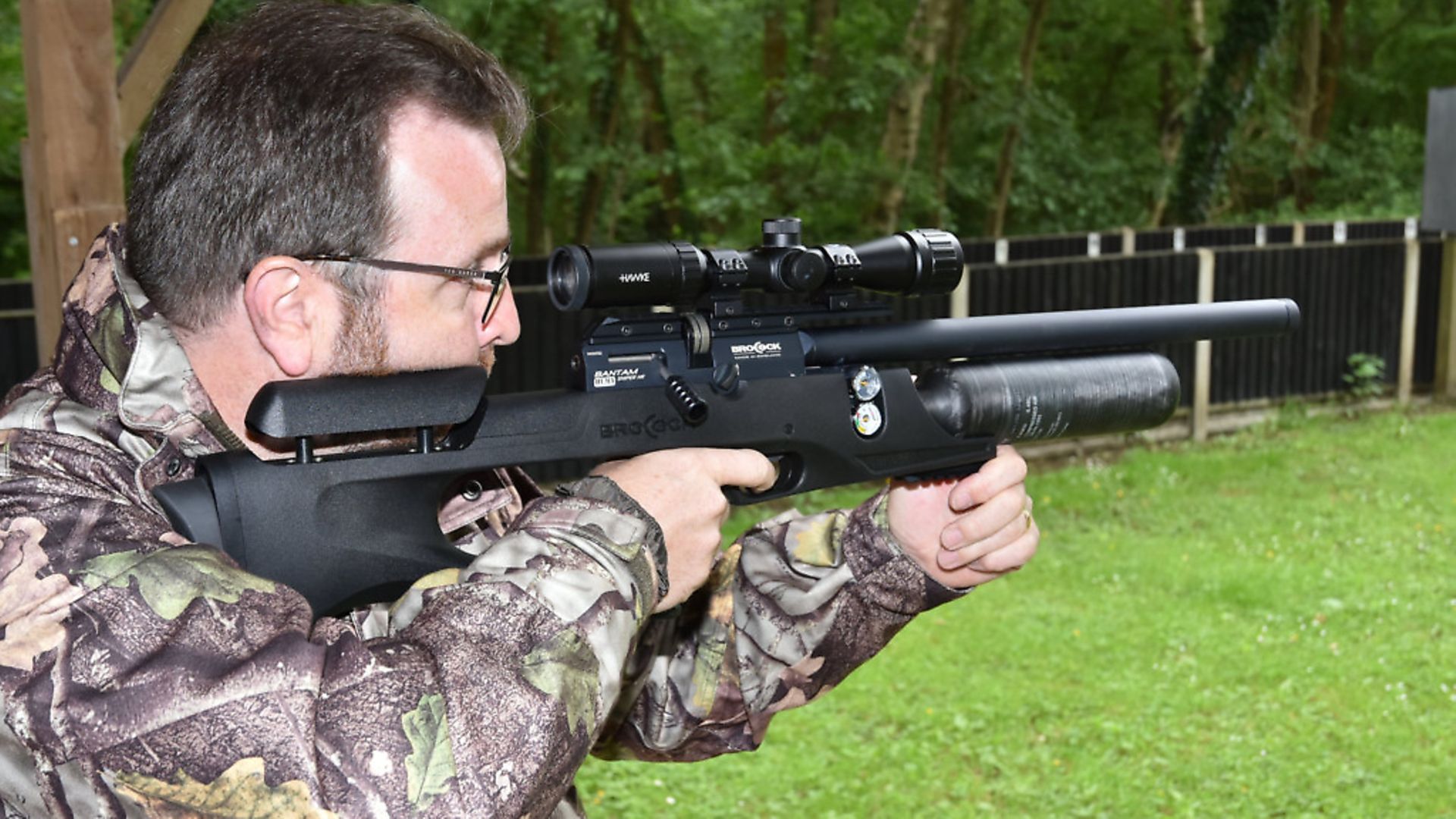 credit: Archant
credit: Archant
Clever design
The Compatto’s action was moved back in the stock around 5”, to make the gun much shorter, even with a full-length barrel, yet in this position it avoided the problem of having the action under your cheek, as with bullpups. Plus, the scope didn’t need to be so high above the centre line of the bore, so the trajectory was less compromised. It was a clever design and one I really appreciated.
The Compatto used a conventional tubular reservoir, which offered a nice feel to the handling, but was slightly limiting on capacity, so the designers went back to the drawing board and came up with the Bantam – based on the Compatto, but with a buddy bottle fitted. For me, this was a case of ‘swings and roundabouts’. Sure, the new gun could offer a massive number of shots per fill, but as with all buddy bottle guns, the looks and handling were compromised. The good news is that we now have the freedom to choose whichever reservoir type suits our needs.
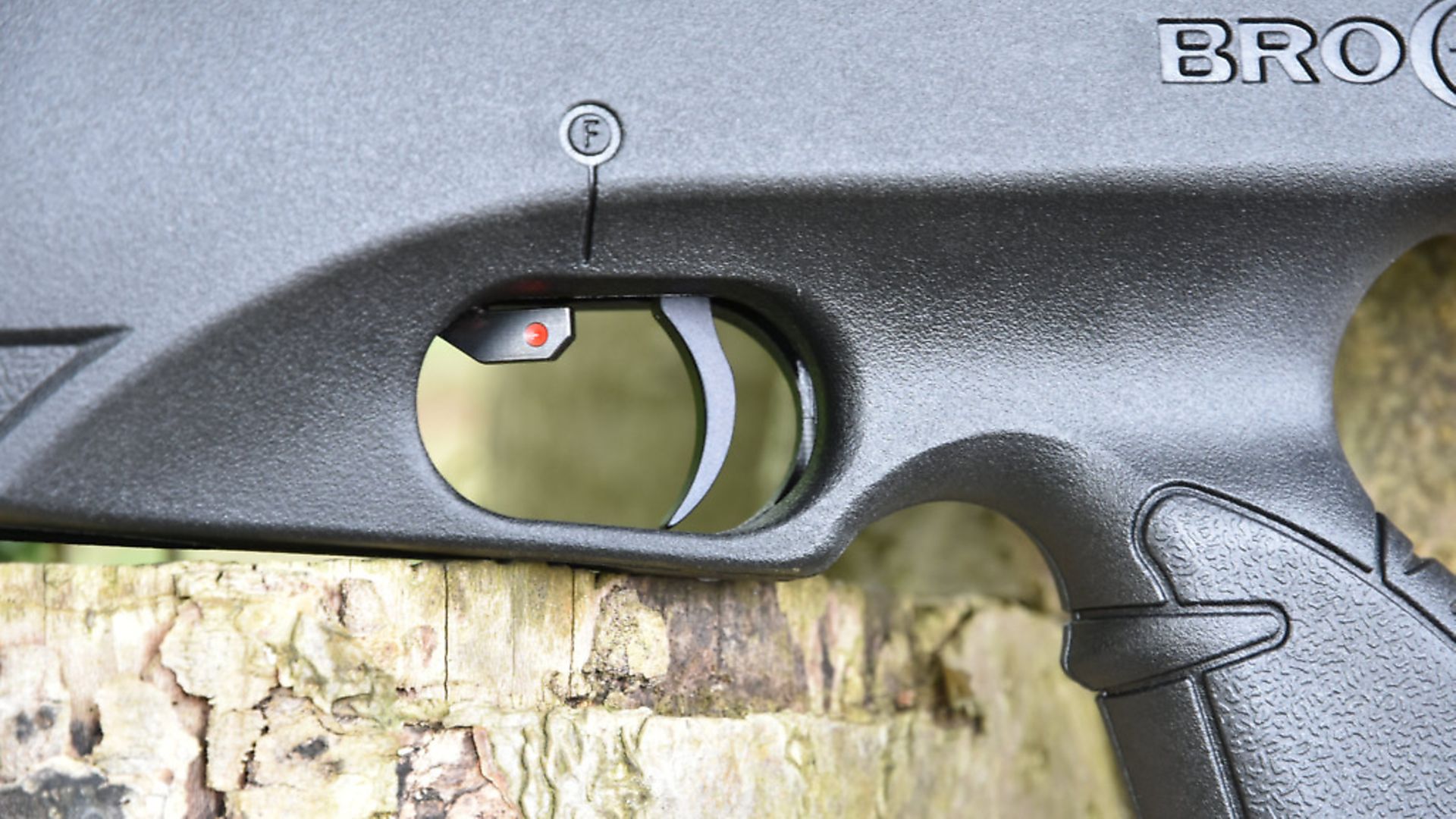 credit: Archant
credit: Archant
Giveaway gauges
Never a company to rest on its laurels, new versions of the Bantam have been on display at shooting shows this year, including the Sniper HR Hilite that you see here. The HR part of the name tells us that it utilises a regulator made by Huma in Holland. Their products have a great reputation, especially with the field competition crowd, so I can see why Brocock has entered into a partnership with them. When you look at the right side of the rifle, you’ll see the giveaway pair of gauges; one white faced for the buddy bottle, and the other grey for the regulator. These are mounted in an extension to the action, which alongside the buddy bottle, gives the Bantam a much deeper and broader feel than a Compatto. Just behind the gauges is the power adjuster, and that makes sense for the high-power export models, but I wasn’t sure if it was used for the UK models. The chronograph would tell.
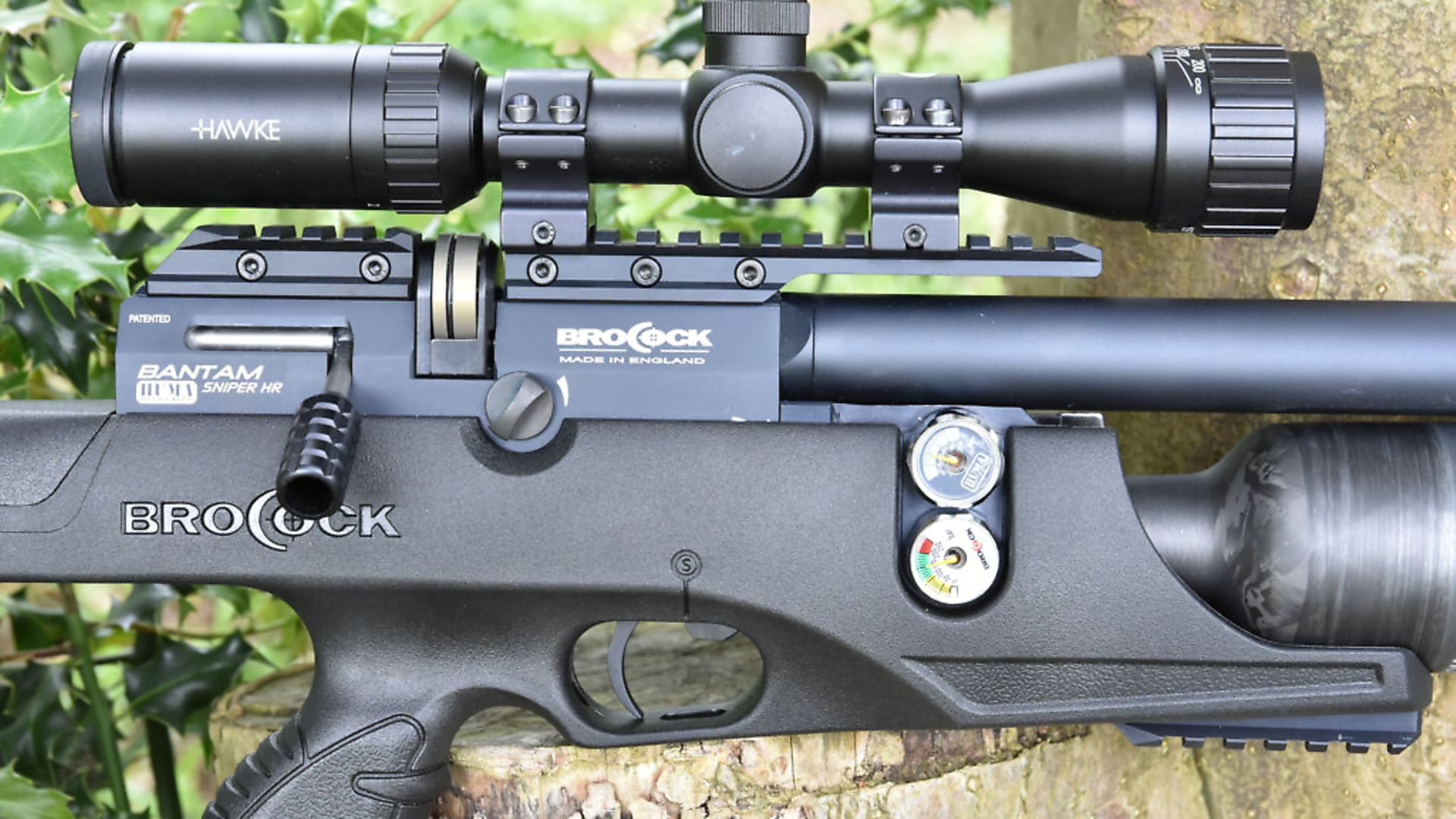 credit: Archant
credit: Archant
Increased efficiency
It’s clear that technology is bring shared between Daystate and Brocock because this rifle is fitted with the superb Harper Slingshot hammer system that eliminates hammer bounce, and therefore increases efficiency. The regulator also gives a big increase in efficiency, which is why we can expect a minimum of 360 shots in .177 for each 200 bar fill. That’s a quite incredible figure for a small, lightweight rifle, or in fact any rifle! You could shoot most of a tin of pellets without ever needing to worry about topping up the air.
The regulator also promises better shot-to-shot consistency, and my Skan chronograph supported this with just 4fps variation over 50 shots with the excellent Air Arms Diablo Field .177 pellet. Average velocity was 770fps, which calculates to 11.1 ft.lbs., so spot-on performance. I moved the power adjuster one click down and saw almost no difference in velocity, but when I moved it to the third position, the power dropped to 7 ft.lbs. – useful for really close-range rats around buildings where a more powerful gun might cause damage.
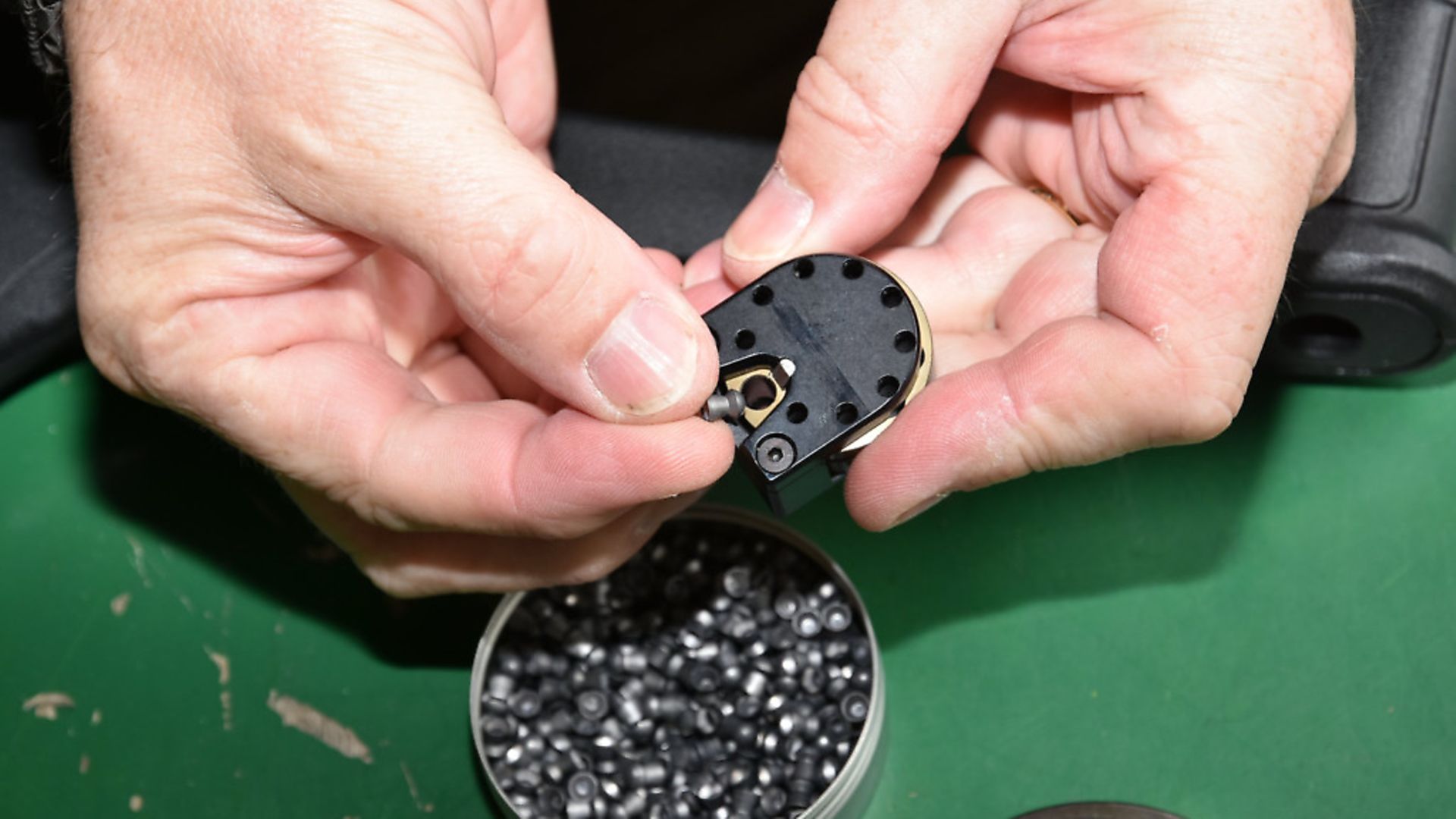 credit: Archant
credit: Archant
Ambidextrous
Adding to the more chunky looks, the Sniper HR model wears a fat, 28mm barrel shroud that has a male ½” unf thread to accept a silencer, and Brocock has three options on offer, of which the short Hugget Belita would be my choice. It offers good noise suppression in a compact package that doesn’t add too much length or weight. The shroud does have some baffles inside designed to take the crack off the muzzle blast, but it’s still quite loud without a silencer. With all these changes, in terms of looks and handling the Bantam Sniper HR is a very long way from the original Compatto.
The Sniper also gets a new stock, which like the Compatto is an ambidextrous, synthetic thumb hole, but has more design detail around the pistol. It also offers a bolt-on section of Weaver rail under the fore end that could be used to attach a bipod or sling swivel. The new stock also has its trigger guard moulded in, rather than having a separate metal one, above which Brocock has moulded in ‘F’ for fire and ‘S’ for safe, showing which way the safety lever works.
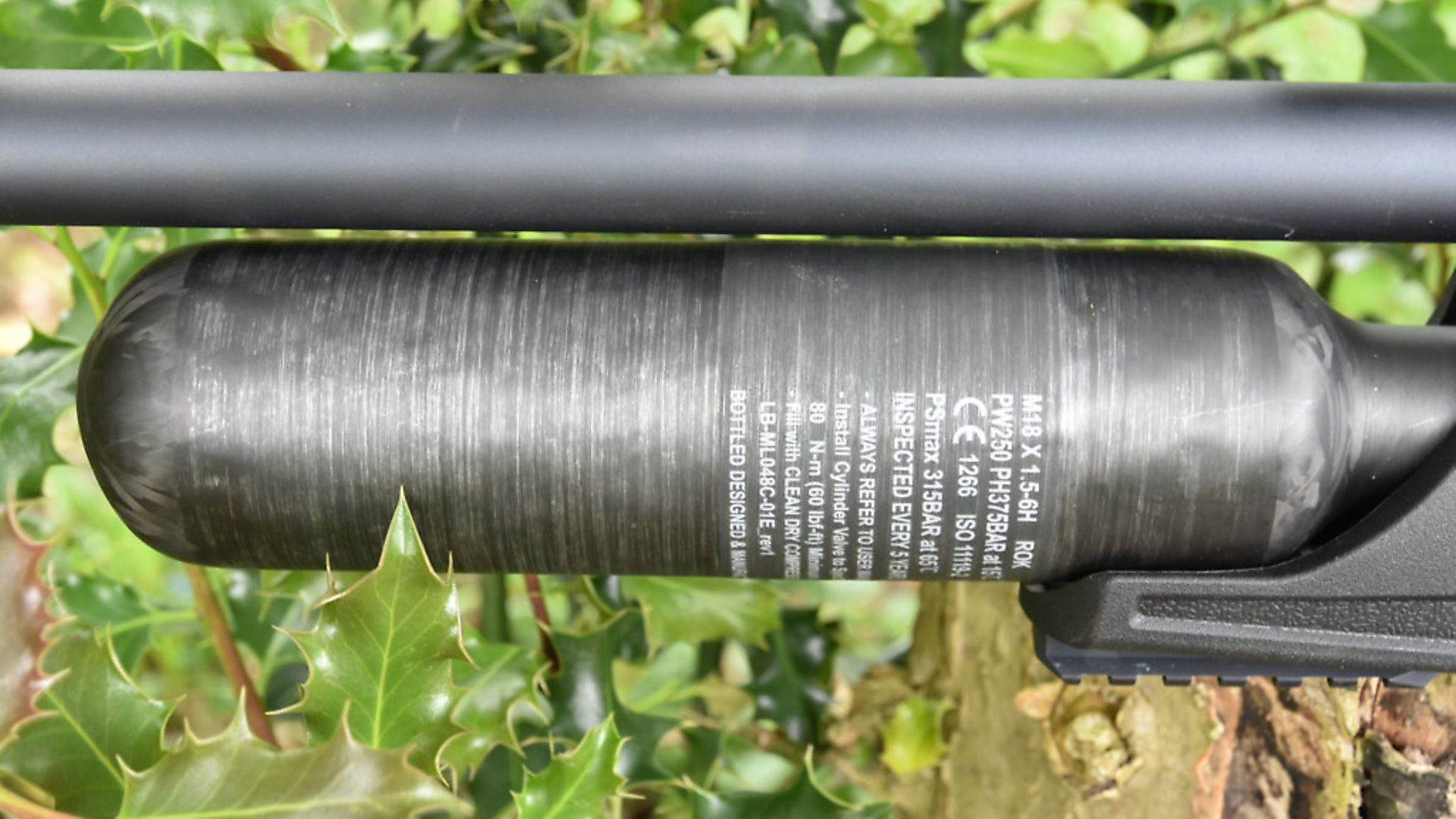 credit: Archant
credit: Archant
Simple mechanism
The butt section boasts an adjustable butt pad and cheek piece, which I believe will soon be the norm on any high-quality rifle that wants to be taken seriously. My test gun was delivered to me with its scope fitted in high mounts for reasons I don’t understand, and even with the cheek piece raised to the limit, I could not get proper support. A swap to Sportsmatch 1” Weaver low mounts brought it down to a much more sensible height. This also helped by reducing the distance between the scope and the barrel to 2”, which is only ¼” more than on a conventional rifle and much, much lower than on a bullpup. Having the scope very high above the bore exaggerates the top-heavy feeling that tall rifles suffer from and makes short-range shots more difficult, such as when you’re targeting rats around the farmyard.
Because the action isn’t too far back, the bolt handle falls quite naturally to hand, making reloading from the shoulder comfortable and easy. In part, this is because the Sniper’s bolt has a large aluminium extension that feels good, and is much more appealing than some of the older designs. Perhaps it’s because my test gun was well-used from shows and demonstrations that I found the cocking action was as smooth a silk and very enjoyable to use. The Brocock magazine is exceptional, all machined from metal, and it employs a very simple mechanism that I think is excellent. As you load the pellets one chamber at a time, you preload the cylinder against a spring. As the bolt presses a pellet into the barrel, it also releases the mechanism so that as the bolt is withdrawn, the magazine automatically aligns the next chamber. In this way, the rifle’s action is kept as simple as can be, which has to be a good thing. I was very pleased to see that a single-shot loading tray is included, so that anybody wanting to use this rifle for hunter field target is automatically catered for.
To place the scope at the right height for our eye, Brocock bolts on an elevated rail which is 11mm as standard, but you can chose a Picatinny version at additional cost. The Compattos I’ve handled had the 11mm version, but the test gun had the Picatinny option, as you can see. Interestingly, it also had a second section of rail behind the magazine cut-out, which I’m guessing might accommodate night-vision devices. This rail seems taller than I remember the 11mm ones being, but I might be wrong on that. The rail lifts the scope relative to the magazine, so it’s possible to use low mounts without the scope clashing with the mag’.
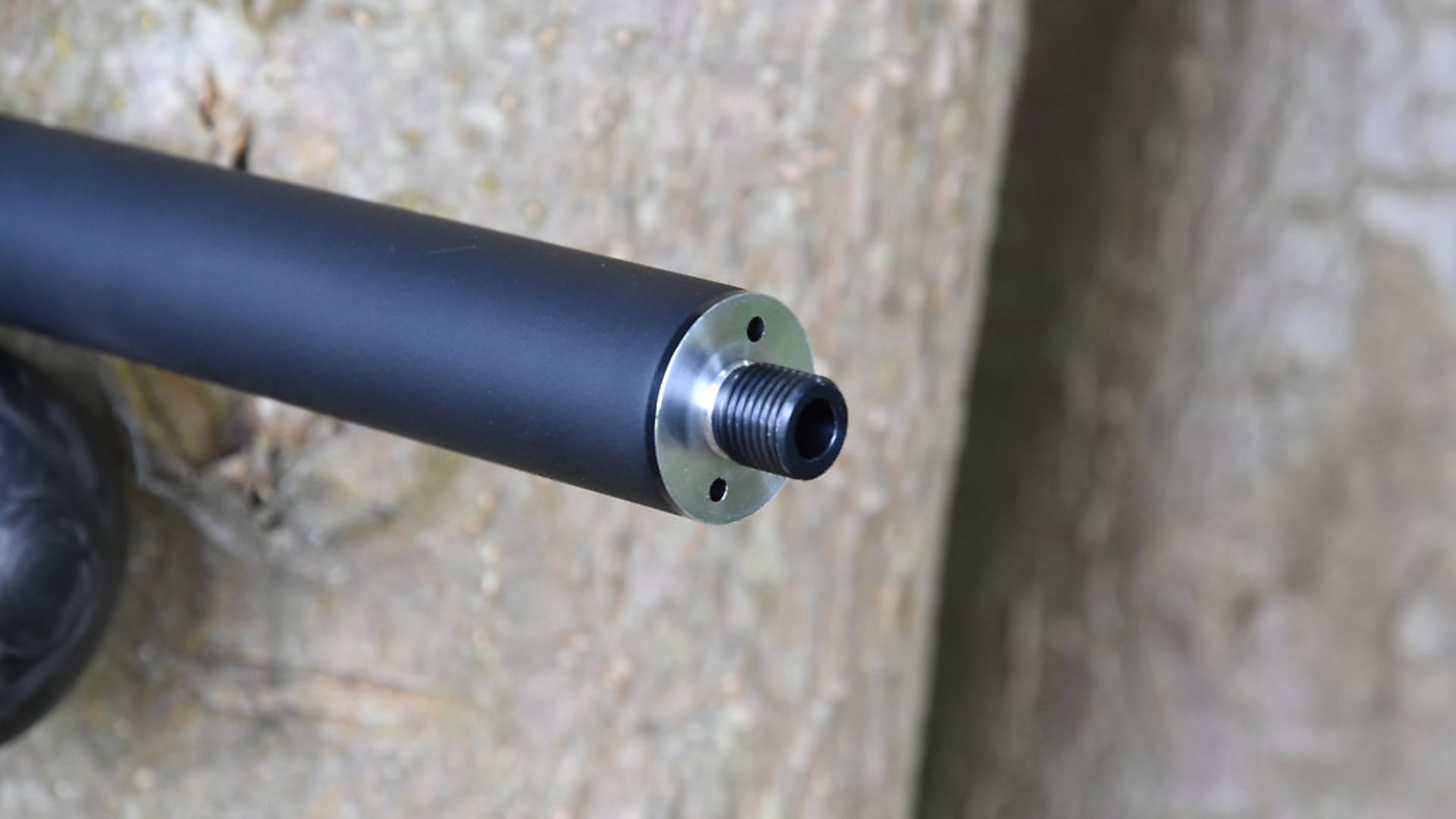 credit: Archant
credit: Archant
Distinctive feature
I’m very keen on good triggers and the one fitted here broke cleanly, even though it was set somewhat heavier than I like. In front of the blade is the safety lever, perfectly placed to be disengaged by your trigger finger just before you release the shot. It’s also ambidextrous to complement the stock, although the bolt-action is right-handed only.
Perhaps the most distinctive feature of the test rifle was the 480cc carbon-fibre buddy bottle. This is larger than the standard steel version and adds another 70 shots to the already impressive count. As the name suggests, it’s also very light and has an unusual finish. Not everybody to whom I showed it, liked it; some said that it looked unfinished, but that’s how high-performance, carbon-fibre looks unless an additional dressing is applied. Filling is done through a male Forster fitting in the belly of the stock. This has a very neat magnetic cover to keep it free from debris that might otherwise find its way into the rifle’s delicate internal mechanism. A special collar is supplied to aid the easy removal of the female half of the connector.
Serious competitor
It’s clear to me that Brocock has succeeded in making a serious competitor to all the bullpups out there. It’s quite compact without a silencer fitted at just 35.6”, yet handles much more like a conventional sporter, coming on aim in a natural and instinctive way. The balance point is just at the front of the trigger guard which aids the ‘pointability’, and because it’s not too tall it doesn’t feel top heavy. To aid this, I fitted a compact 2-7 x 32 Hawke Vantage, which I felt suited the rifle perfectly.
Accuracy was everything I’d hoped for, with neat ½” groups forming at 30 yards when the wind allowed, which is just what I want from a lightweight hunting rifle. Full-size, knock-down targets were easy prey out to 50 yards, too, so I knew the rifle was delivering all the accuracy I needed. As the rifle ran in, accuracy seemed to improve to the extent that my only limitation on some 55-yard spinners was the wind.
This is a bold step for Brocock to offer a rifle in this price range, because they’ve previously been known for making far more modestly priced fare. You’re getting top-of-the-line components in the form of the Harper Slingshot hammer system, a Huma regulator, a carbon-fibre bottle and a top-class Lothar Walther barrel, all of which explain the price to some degree. You also get a properly adjustable stock which is a big plus point in my book. This is a compact, high performance rifle with an innovative design and a gun that deserves to compete with the big names at this price. Time will tell, but perhaps Brocock has moved into the big time at last.
Specification
Manufacturer: Brocock
Web: www.brocock.co.uk
Tel: 08448 009905
Model: Bantam Sniper HR Hilite
Type: Pre-charged pneumatic
Action: Bolt-action
Loading: 10-shot rotary magazine or single-shot tray
Fill pressure: 200bar
Shots per fill:
400cc in 177 is 360 shots
400cc in .22 is 450 shots
480cc in 177 is 430 shots
480cc in .22 is 530 shots
Calibres: .177 and .22
Length: 34.6” (880mm)
Barrel length: 18” (457mm)
Walther Lothar
Weight: 7lbs (3.2kg)
Trigger: Two-stage adjustable
Stock: Ambidextrous synthetic. Adjustable cheek piece and butt pad
Options: High-power models available
RRP:
Steel reservoir £864.00
Hilite carbon fibre reservoir: £964.00
Picatinny rail + £79
Silencer £50 for the Signature
£75 for reflex and £85 for Huggett Belita
__________________________________________________
Gun test: Brocock Compatto Target
Follow-up gun test: Brocock Compatto Target rifle